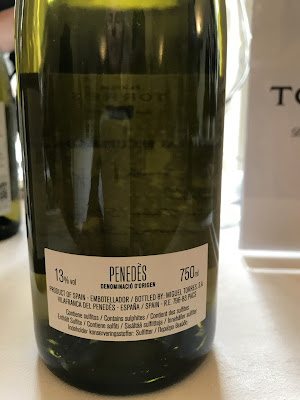Witte
Colonjes Knapse Witte Helios and Riesel. Beschermde Geografische Aanduiding Gelderland. 2022. 13%
Domein Hof te Dieren. Johanniter. Landwein uit Gelderland. NV. 12%
Aan de Breede Beek. Muscaris. Beschermde Geografische Aanduiding Gelderland. 2022. 12%
Smaak van Bilderhof, Dordrecht. Souvignier Gris. Nederlands Product. 2020. 11.5%
Rood
Smaak van Bilderhof, Dordrecht. Dordts Rood. Bolero. Wijn van Nederland. NV. 12.5%
 |
Sent in recompense for missing-label bottle below
|
Hof van Baarle Cabernet Cantor. Beschermde Geografische Aanduiding Noord-Brabant. 2022. 11%
Wijngaard & Boerderijwinkel Maronesse Polder Passie rood. Cabernet Cortis. Marknesse, Flevoland. 2019. 12.5% NO LABEL!
Avondrood. Celtic Fields. Cabernet Noir. Matendijk, Wekerom (Gelderland). 2019. 12%
Wijngoed Wilgenhorst. Zomer Rood. Cabaret Noir. Zeewolde. Beschermde geografische aanduiding Flevoland (NL). 2022. 12.5%
Wijngaard Dassemus. Wilde Rode. Rondo, Cabernet Cortis, Baron. Beschermde Geografische Aanduiding Noord-Brabant. 20+21. 8.5%.
Achterhoekse Oorsprong. Regent. Gelderse Landwijn uit de Achterhoek. 2019. 12.5%
When you enter a Dutch wine shop and ask to buy Dutch wine they laugh and say Dutch wine is sour and expensive.
That hasn't been our experience in the past and indeed we formed a theory that Dutch still wine was better than English and Welsh non-sparkling. wine. The theory was based on the climate being on average 1 degree Celsius warmer and the Dutch having longer experience in winemaking that we do.
At a wine festival in Groesbeek a while ago we tasted quite a few Dutch wines from vinifera grapes but our interest was more in those made with PIWI varieties which the Dutch seem to have embraced on a wider scale than here. Maybe this has something to do with the fact in comparison with the UK, hardly any sparkling wine is made in the Netherlands.
So with a trip to Amsterdam in the offing last year we decided to avoid the winemerchants' mockery and buy our Dutch wine online and have it delivered to our hotel. Our selection concentrated on PIWI wines especially those including less well known varieties sUch as Bolero, Helios, Riesel and so forth.
Standouts were the red of Smaak van Bilderhof of Dordrecht which is interesting because Dordrecht is not in the normal wine-growing region of The Netherlands. In fact it is just half an hour south of Rotterdam. The variety was Bolero which we were tasting for the first time. Very promising. They also made a passable Souvignier Gris.
The best white was the Muscaris of Aan de Breede Beek of Gelderland, also not the main winegrowing area. Breede Beek is 30 minutes east of Hilversum. Muscaris is something we have planted ourselves and have a further 25 vines on order for filling gaps this year. Aan de Breede Beek's Muscaris was also popular at a post-tasting dinner.
While not exceptional but yet enjoyable, the Dassemus blend of Rondo, Cabernet Cortis and Baron went down easily as did the Avondrood Cabrenet Noir (a couple of days after opening), the Colonjes Helios and Riesel and the Maronesse Polder Passie Cabernet Cortis if that is what it was ('NO LABEL').
So the takeaway could be said to be that Dutch wine from PIWI varieties is a mixed bag sometimes benefitting from drinking after a really good airing (two days or more). That geographical area appears not to be critical and that it is not sour or particularly expensive. The difference between English and Welsh wine and Dutch wine is that 60% of UK wine is sparkling whereas only a very small proportion of Dutch wine is. The choice of grapes is also rather different with the Dutch going for more PIWI kinds coming from Germany and Switzerland with our varieties more likely to be the old German and French ones like Madeleine Angevine, Schonberger and Reichensteiner with a lot of Bacchus and purely vinifera types.
Why did we want to taste Dutch PIWI wines? Partly because we have long thought Dutch still wine is better than English and partly because we are always on the lookout for a PIWI wine to disprove Jose Vouillamoz's contention that there are no great wines from PIWI or resistant vines. We think English wines have now caught up with Dutch ones but we have still to find a wine good enough to propose to Dr. Vouillamoz.
 |
| They also make vinifira wines. |























































